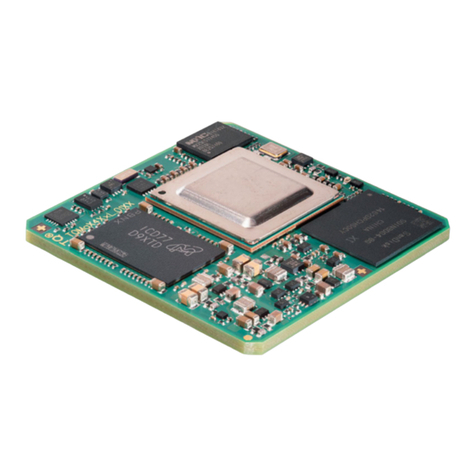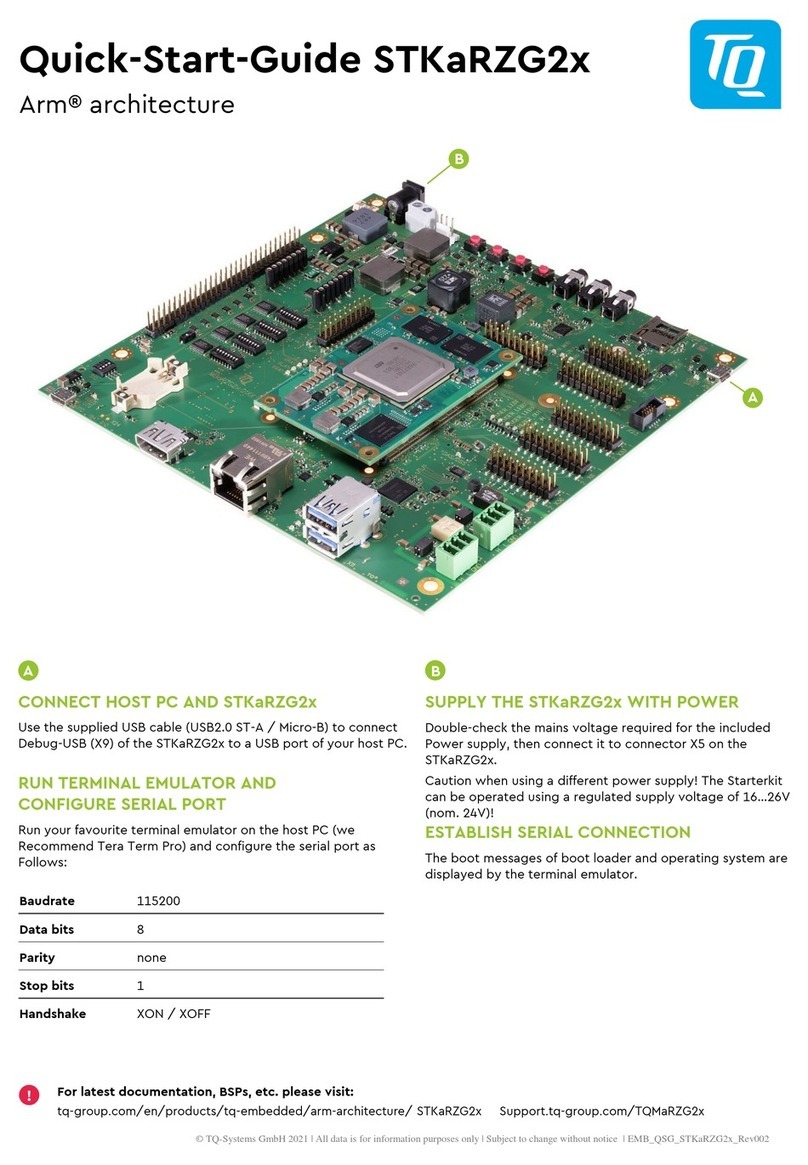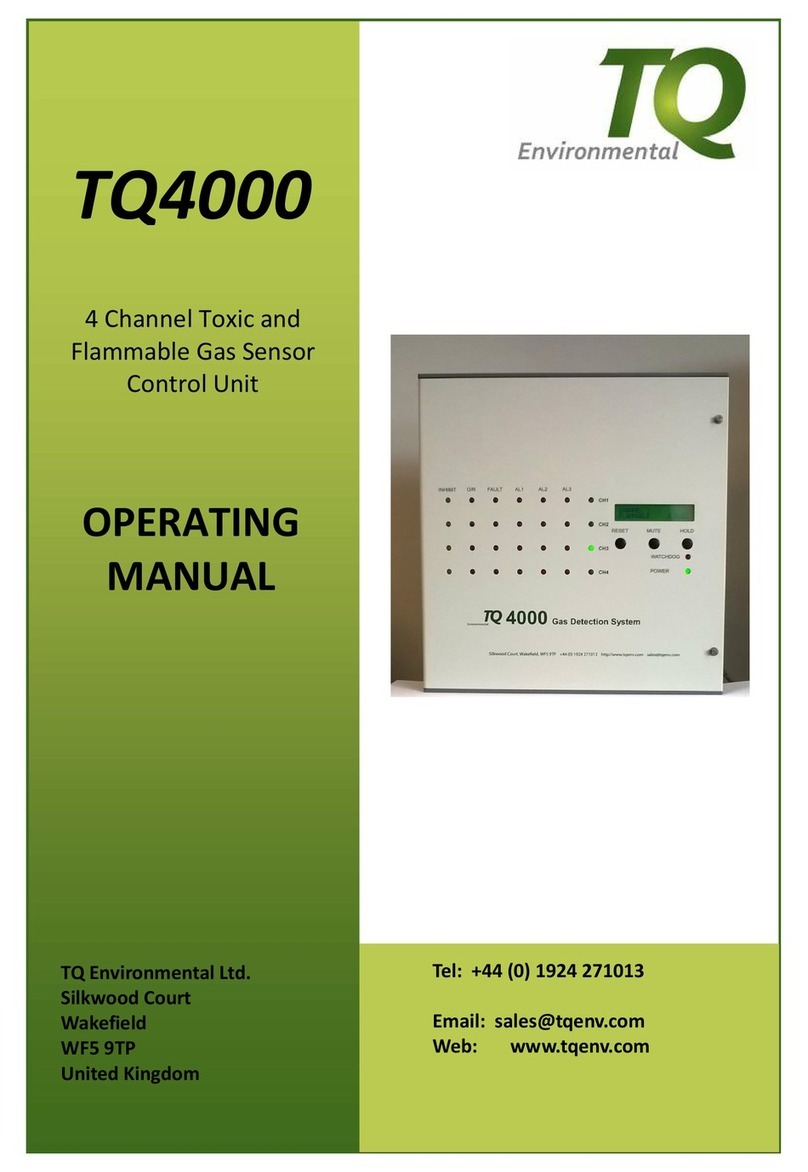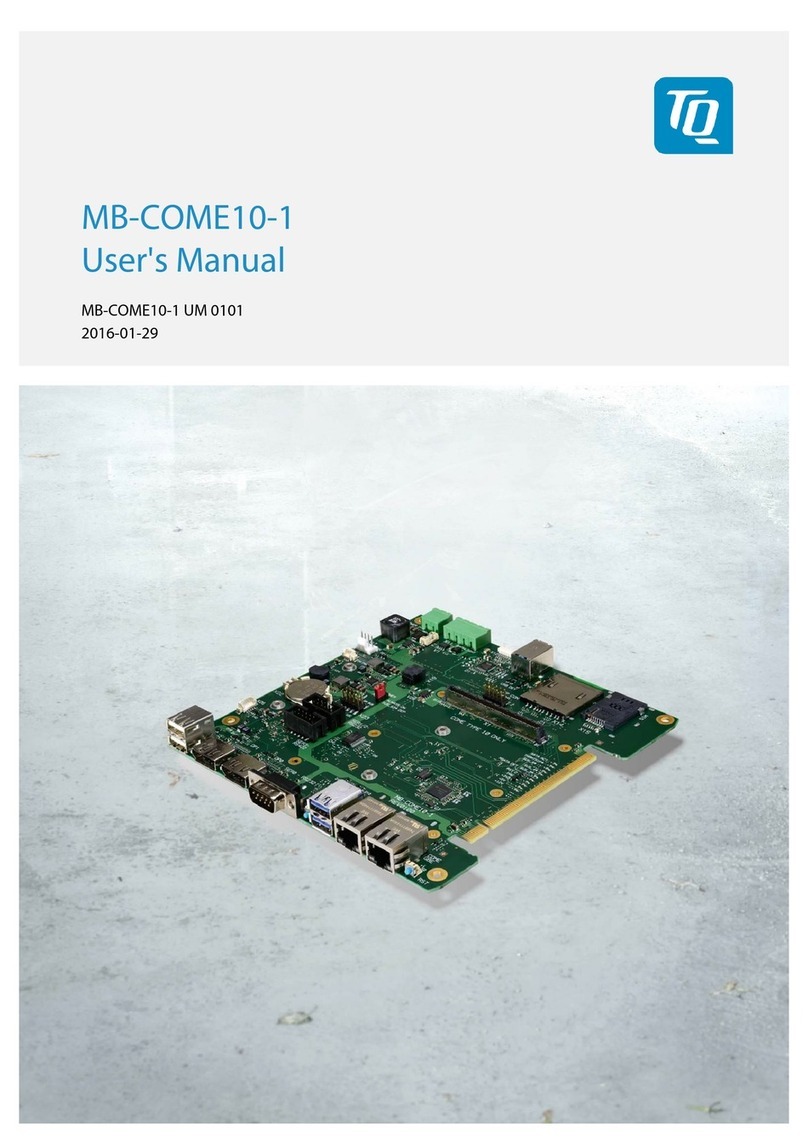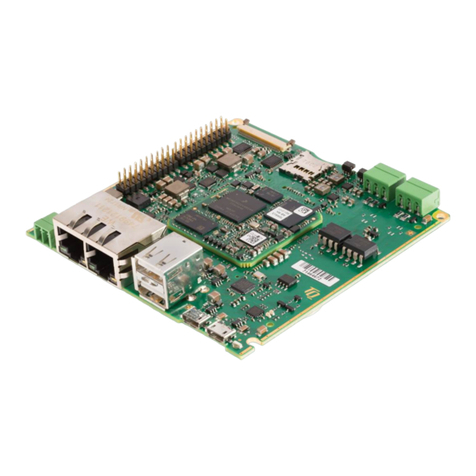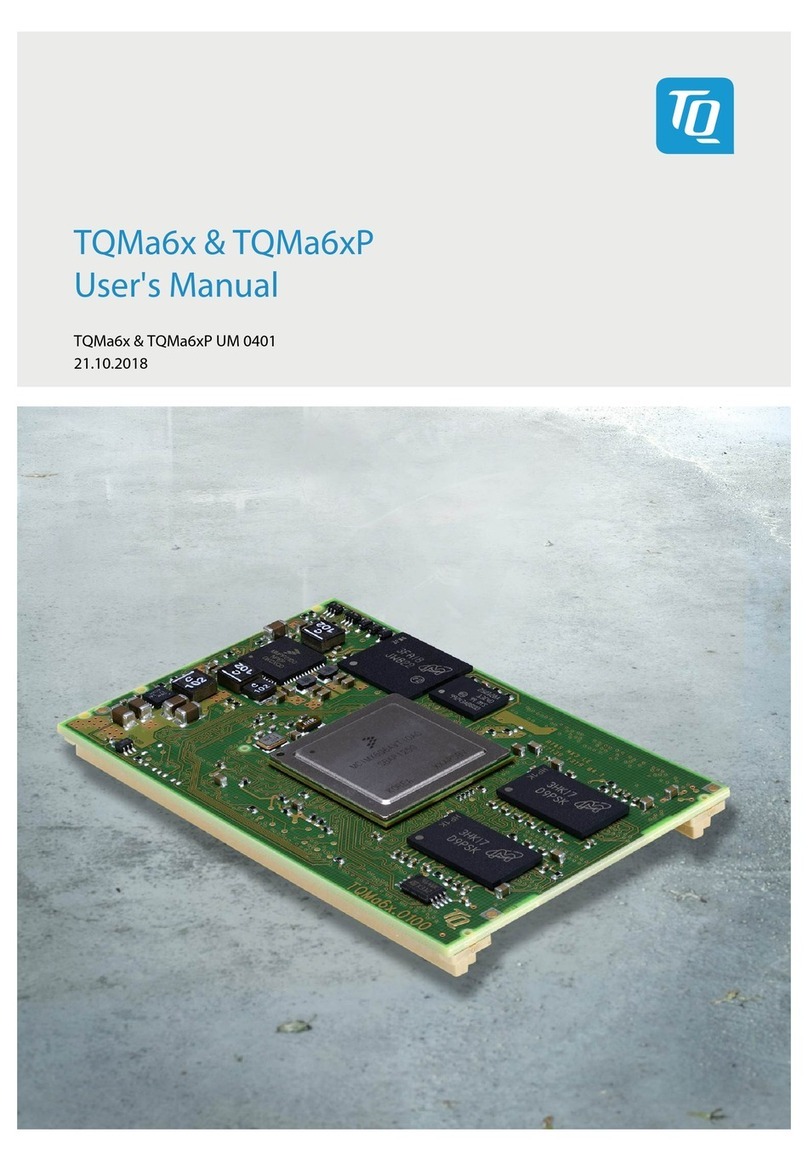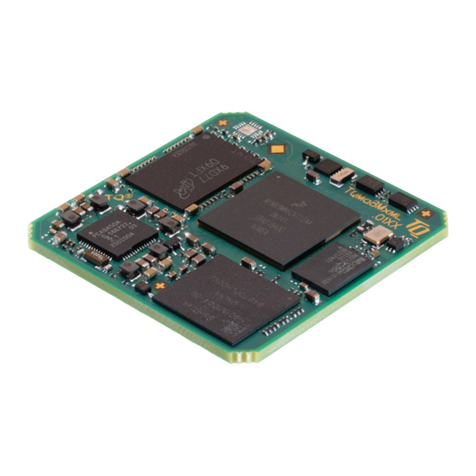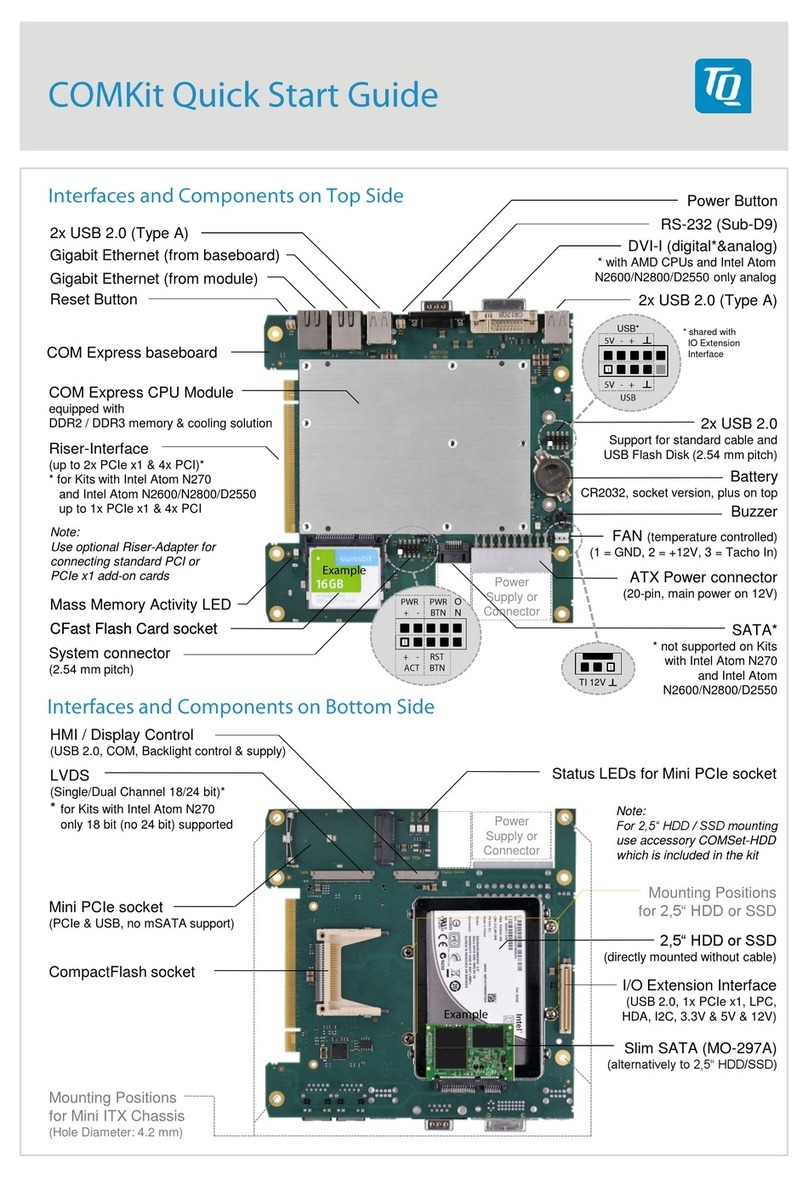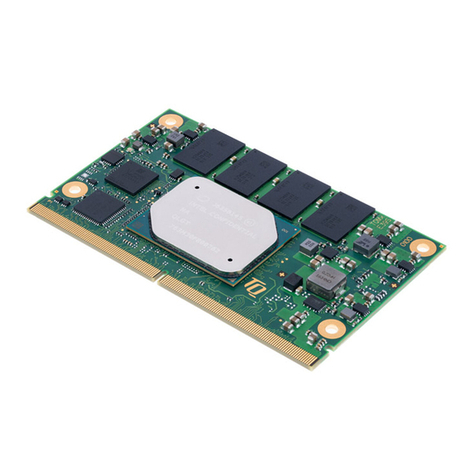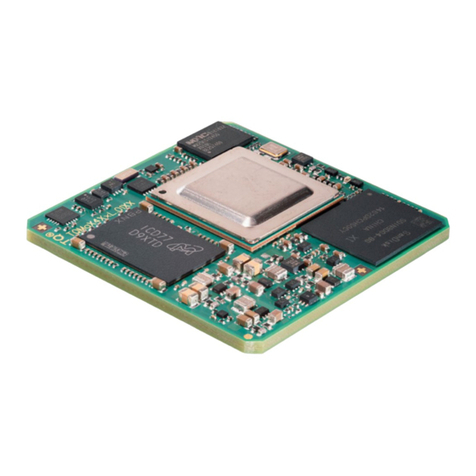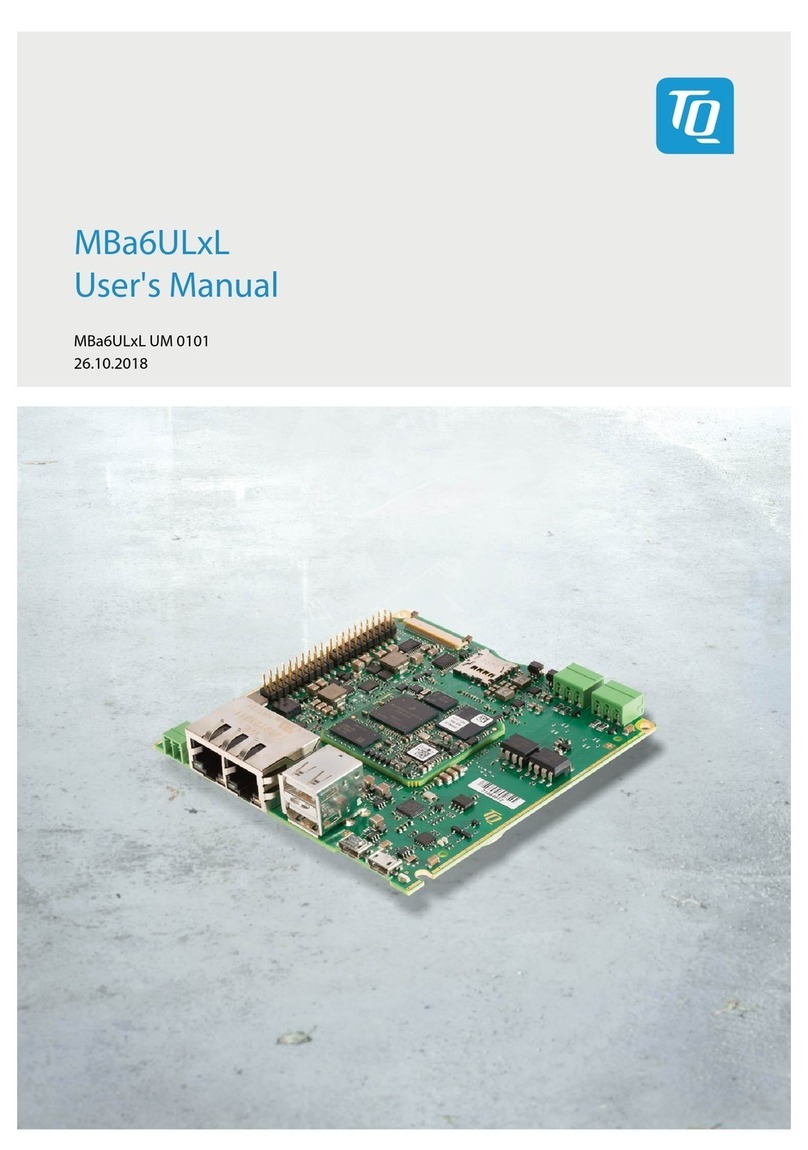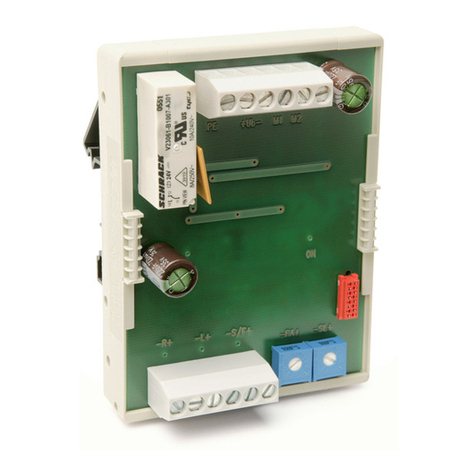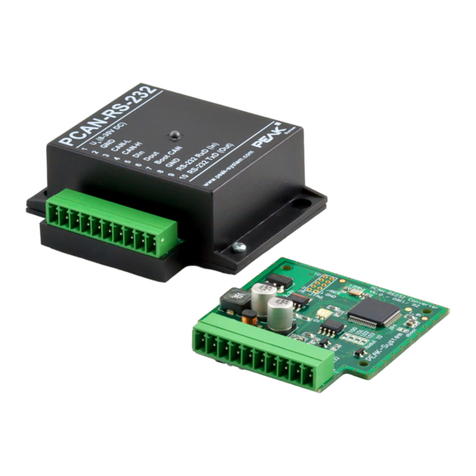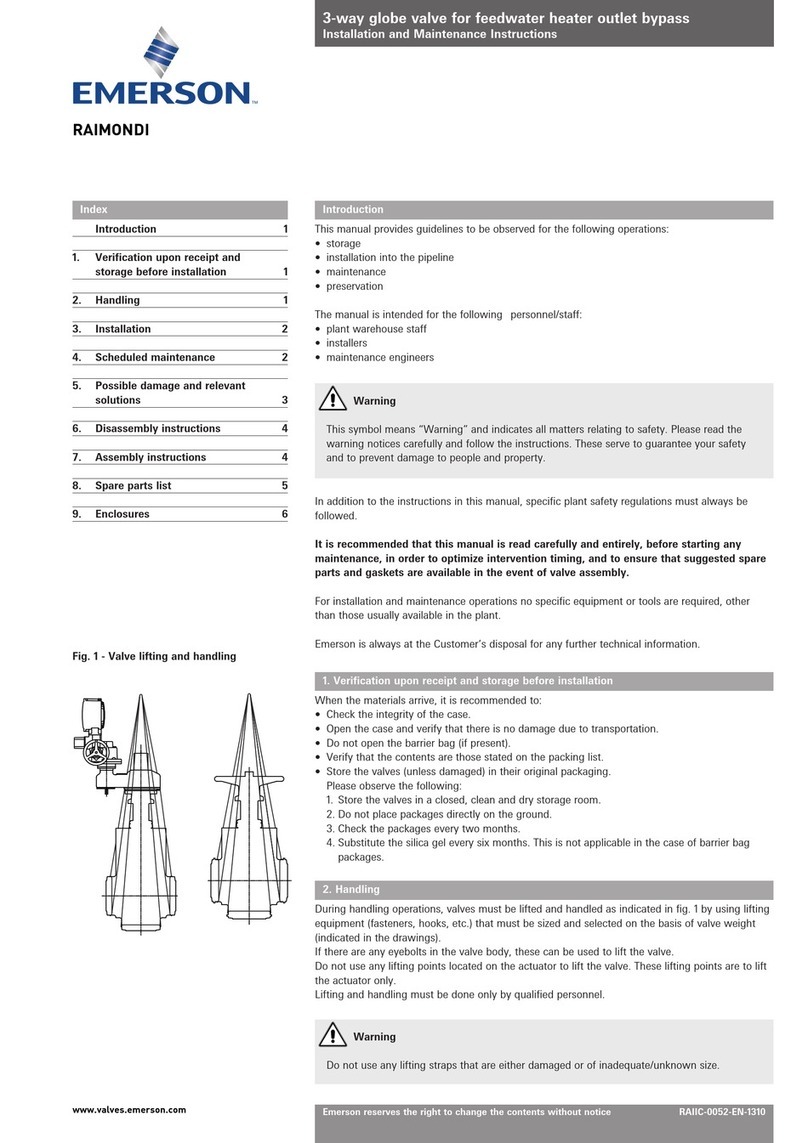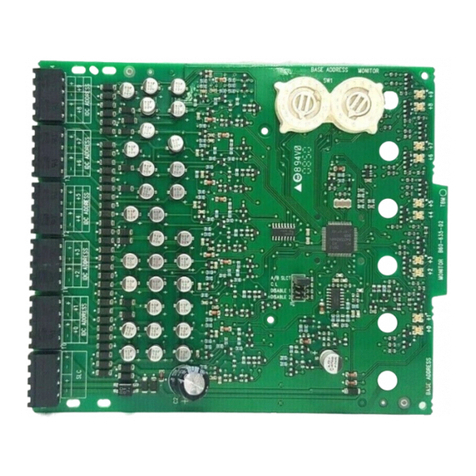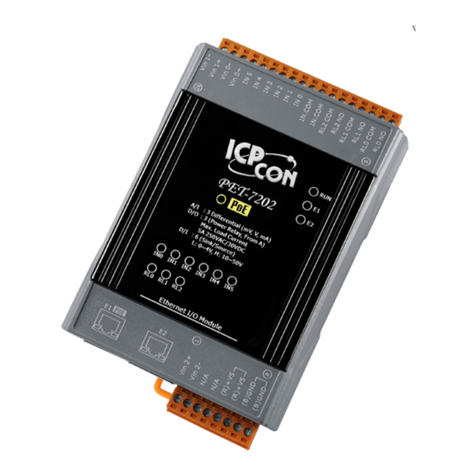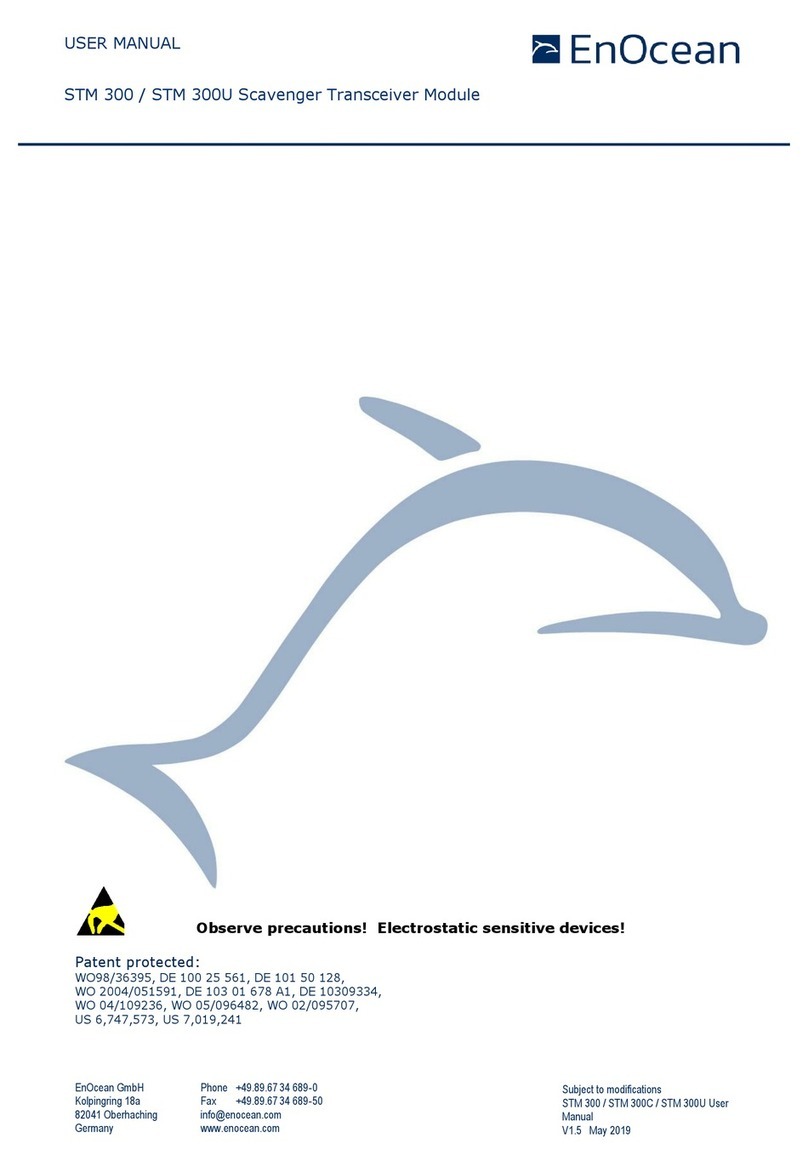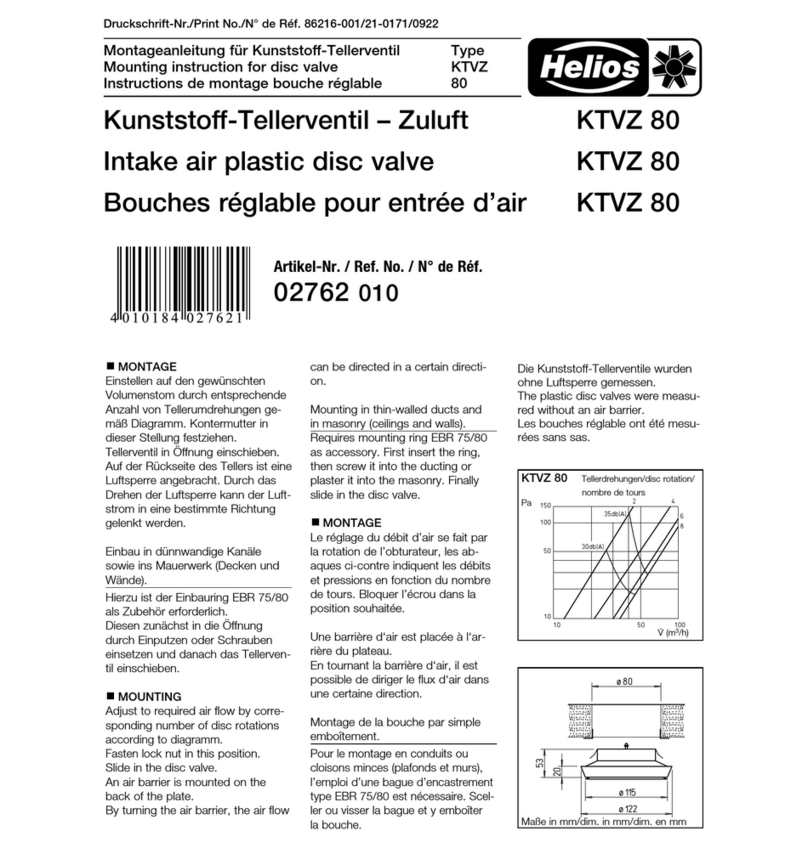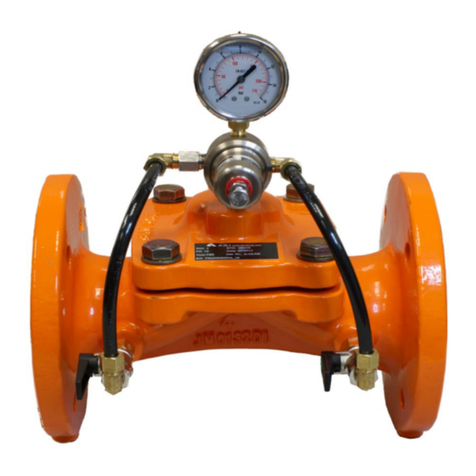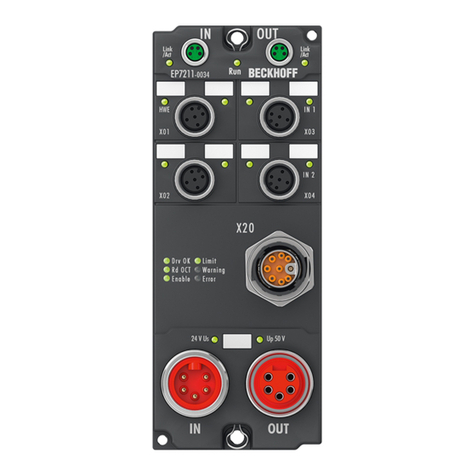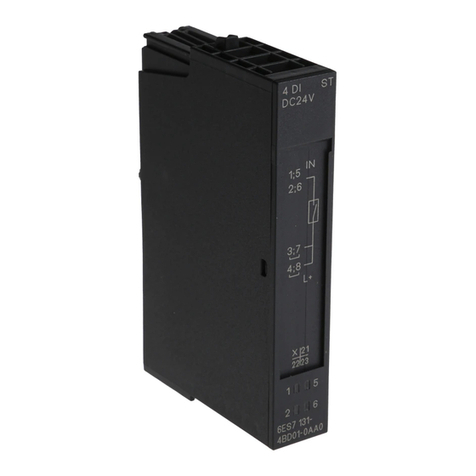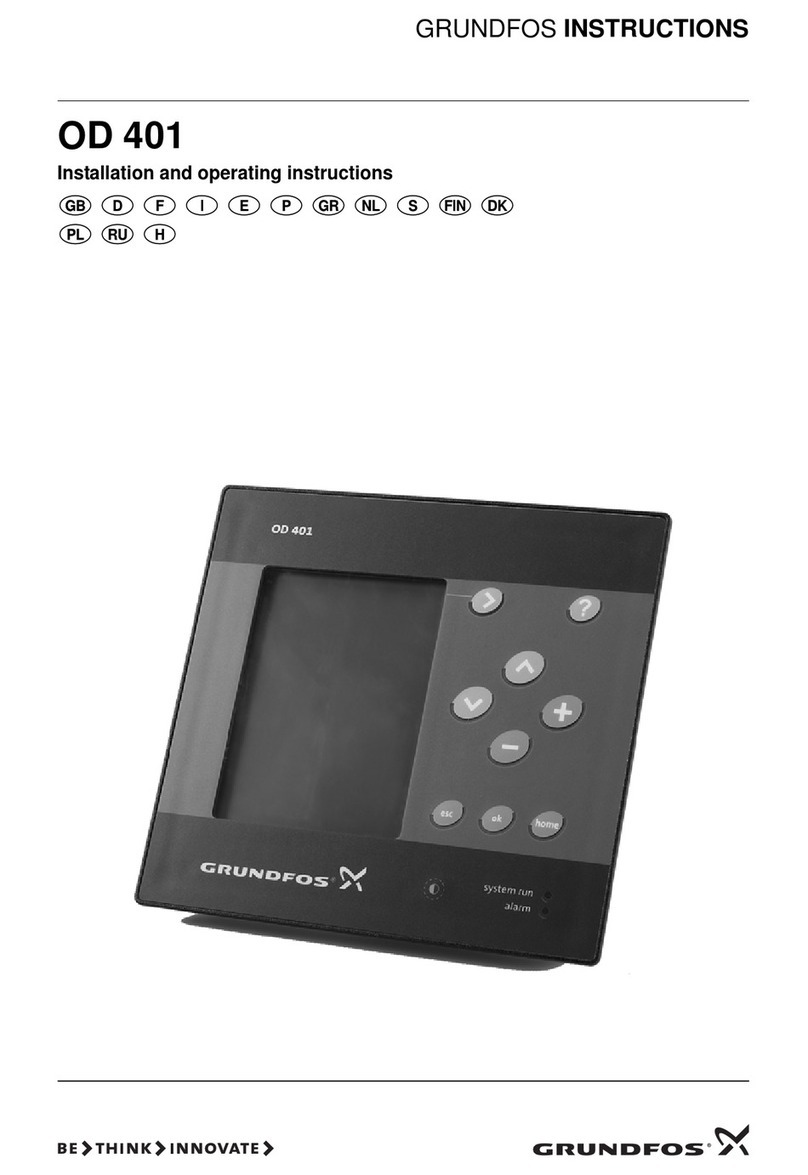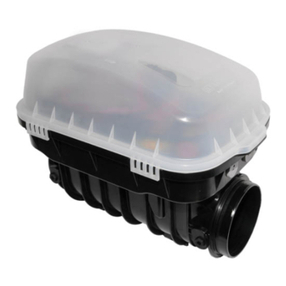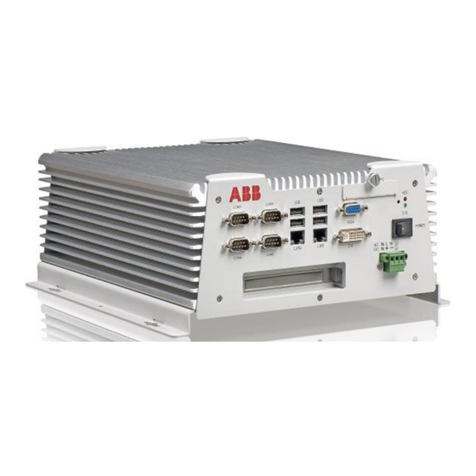TQ TQMa335xL User manual

TQMa335xL
User's Manual
TQMa335xL UM 0101
20.09.2019

User's Manual l TQMa335xL UM 0101 l © 2019, TQ-Systems GmbH Page i
TABLE OF CONTENTS
1. ABOUT THIS MANUAL.................................................................................................................................................................1
1.1 Copyright and license expenses..............................................................................................................................................1
1.2 Registered trademarks................................................................................................................................................................1
1.3 Disclaimer .......................................................................................................................................................................................1
1.4 Imprint .............................................................................................................................................................................................1
1.5 Tips on safety.................................................................................................................................................................................2
1.6 Symbols and typographic conventions.................................................................................................................................2
1.7 Handling and ESD tips ................................................................................................................................................................2
1.8 Naming of signals.........................................................................................................................................................................3
1.9 Further applicable documents / presumed knowledge...................................................................................................3
2. BRIEF DESCRIPTION......................................................................................................................................................................4
2.1 Key functions and characteristics............................................................................................................................................4
2.2 Available interfaces......................................................................................................................................................................5
3. ELECTRONICS.................................................................................................................................................................................6
3.1 System overview...........................................................................................................................................................................6
3.1.1 System architecture / block diagram .....................................................................................................................................6
3.1.2 Functionality..................................................................................................................................................................................6
3.1.3 Pin multiplexing............................................................................................................................................................................6
3.2 System components....................................................................................................................................................................7
3.2.1 AM335x processor........................................................................................................................................................................7
3.2.1.1 AM335x derivatives .....................................................................................................................................................................7
3.2.1.2 Boot modes ....................................................................................................................................................................................8
3.2.1.3 Boot configuration.......................................................................................................................................................................9
3.2.1.4 Boot interfaces ........................................................................................................................................................................... 10
3.2.1.4.1 Boot device SD card.................................................................................................................................................................. 10
3.2.1.4.2 Boot device eMMC.................................................................................................................................................................... 10
3.2.2 Memory ........................................................................................................................................................................................ 11
3.2.2.1 DDR3L SDRAM............................................................................................................................................................................ 11
3.2.2.2 eMMC NAND flash..................................................................................................................................................................... 11
3.2.3 AM335x-RTC, PMIC-RTC........................................................................................................................................................... 12
3.2.4 Interfaces...................................................................................................................................................................................... 13
3.2.4.1 Overview ...................................................................................................................................................................................... 13
3.2.4.2 Gigabit Ethernet MAC .............................................................................................................................................................. 14
3.2.4.3 GPMC / External memory bus ............................................................................................................................................... 14
3.2.4.4 MMC / SD card............................................................................................................................................................................ 15
3.2.4.5 GPIO............................................................................................................................................................................................... 15
3.2.4.6 PWM .............................................................................................................................................................................................. 15
3.2.4.7 JTAG / DEBUG ............................................................................................................................................................................. 16
3.2.4.8 Touch and analog inputs ........................................................................................................................................................ 16
3.2.4.9 LCD controller............................................................................................................................................................................. 17
3.2.4.10 Serial interfaces.......................................................................................................................................................................... 18
3.2.4.11 CAN................................................................................................................................................................................................ 18
3.2.4.12 I2C .................................................................................................................................................................................................. 18
3.2.4.13 I2S / AUDMUX............................................................................................................................................................................. 19
3.2.4.14 SPI................................................................................................................................................................................................... 19
3.2.4.15 UART.............................................................................................................................................................................................. 20
3.2.4.16 UART0............................................................................................................................................................................................ 20
3.2.4.17 UART3............................................................................................................................................................................................ 20
3.2.4.18 UART4............................................................................................................................................................................................ 21
3.2.4.19 USB................................................................................................................................................................................................. 21
3.2.4.20 EXTINT#......................................................................................................................................................................................... 21
3.2.4.21 Clockout ....................................................................................................................................................................................... 22

User's Manual l TQMa335xL UM 0101 l © 2019, TQ-Systems GmbH Page ii
TABLE OF CONTENTS (continued)
3.2.5 Reset.............................................................................................................................................................................................. 22
3.2.6 WDOG ........................................................................................................................................................................................... 23
3.2.7 Power supply .............................................................................................................................................................................. 23
3.2.7.1 Main power supply ................................................................................................................................................................... 23
3.2.7.2 Overview TQMa335xL supply................................................................................................................................................ 23
3.2.7.3 Adaptive Voltage Scaling (AVS) ............................................................................................................................................ 24
3.2.7.4 Voltage supervision.................................................................................................................................................................. 24
3.2.7.5 TQMa335xL / carrier board Power-Up sequence............................................................................................................. 24
3.2.8 Power-Modes.............................................................................................................................................................................. 25
3.2.8.1 RTC backup.................................................................................................................................................................................. 25
3.2.8.2 AM335x DEEP-SLEEP0-2, Standby........................................................................................................................................ 25
3.2.8.3 AM335x Active Mode ............................................................................................................................................................... 25
3.3 TQMa335xL interface ............................................................................................................................................................... 26
3.3.1 Pin assignment........................................................................................................................................................................... 26
3.3.2 Pinout TQMa335xL.................................................................................................................................................................... 26
4. SOFTWARE................................................................................................................................................................................... 31
5. MECHANICS................................................................................................................................................................................. 31
5.1 TQMa335xL dimensions and footprint............................................................................................................................... 31
5.2 TQMa335xL 3D views ............................................................................................................................................................... 32
5.3 TQMa335xL component placement.................................................................................................................................... 32
5.4 Protection against external effects ...................................................................................................................................... 33
5.5 Thermal management ............................................................................................................................................................. 33
5.6 Structural requirements .......................................................................................................................................................... 33
6. SAFETY REQUIREMENTS AND PROTECTIVE REGULATIONS .......................................................................................... 33
6.1 EMC................................................................................................................................................................................................ 33
6.2 ESD................................................................................................................................................................................................. 33
6.3 Operational safety and personal security .......................................................................................................................... 33
6.4 Climatic and operational conditions ................................................................................................................................... 34
6.5 Reliability and service life........................................................................................................................................................ 34
6.6 Environment protection.......................................................................................................................................................... 35
6.6.1 RoHS .............................................................................................................................................................................................. 35
6.6.2 WEEE®............................................................................................................................................................................................ 35
6.7 REACH®......................................................................................................................................................................................... 35
6.8 EuP ................................................................................................................................................................................................. 35
6.9 Battery........................................................................................................................................................................................... 35
6.10 Packaging .................................................................................................................................................................................... 35
6.11 Other entries............................................................................................................................................................................... 35
7. APPENDIX..................................................................................................................................................................................... 36
7.1 Acronyms and definitions....................................................................................................................................................... 36
7.2 References ................................................................................................................................................................................... 38

User's Manual l TQMa335xL UM 0101 l © 2019, TQ-Systems GmbH Page iii
TABLE DIRECTORY
Table 1: Terms and Conventions .............................................................................................................................................................2
Table 2: AM335x derivatives .....................................................................................................................................................................7
Table 3: Boot sequence...............................................................................................................................................................................8
Table 4: Oscillator frequency.....................................................................................................................................................................9
Table 5: General boot configuration CLKOUT1...................................................................................................................................9
Table 6:Boot device selection..................................................................................................................................................................9
Table 7: Pins used for SD card boot ..................................................................................................................................................... 10
Table 8: Pins used for eMMC boot........................................................................................................................................................ 10
Table 9: DDR3L SDRAM............................................................................................................................................................................ 11
Table 10: SDRAM address space.............................................................................................................................................................. 11
Table 11: Internal interfaces...................................................................................................................................................................... 13
Table 12: External interfaces..................................................................................................................................................................... 13
Table 13: RGMII1........................................................................................................................................................................................... 14
Table 14: RGMII2........................................................................................................................................................................................... 14
Table 15: SD card signals ........................................................................................................................................................................... 15
Table 16: GPIO signals ................................................................................................................................................................................ 15
Table 17: PWM signals................................................................................................................................................................................ 15
Table 18: JTAG modes ................................................................................................................................................................................ 16
Table 19: JTAG signals ................................................................................................................................................................................ 16
Table 20: Touch signals.............................................................................................................................................................................. 16
Table 21: LCD signals .................................................................................................................................................................................. 17
Table 22: CAN1 / CAN2 signals................................................................................................................................................................. 18
Table 23: I2C0 and I2C1 signals................................................................................................................................................................ 18
Table 24: I2C0 addresses............................................................................................................................................................................ 18
Table 25: MCASP0 signals.......................................................................................................................................................................... 19
Table 26: SPI0 and SPI1 signals ................................................................................................................................................................ 19
Table 27: UART0 signals ............................................................................................................................................................................. 20
Table 28: UART3 signals ............................................................................................................................................................................. 20
Table 29: UART4 signals ............................................................................................................................................................................. 21
Table 30: USB_H1 signals........................................................................................................................................................................... 21
Table 31: EXTINT# signal............................................................................................................................................................................ 21
Table 32: Clockout signals......................................................................................................................................................................... 22
Table 33: Reset signals................................................................................................................................................................................ 22
Table 34: Parameter TQMa335xL supply .............................................................................................................................................. 23
Table 35: PMIC RTC ...................................................................................................................................................................................... 25
Table 36: AM335x DEEP-SLEEP0-2, Standby........................................................................................................................................ 25
Table 37: AM335x Active Mode ............................................................................................................................................................... 25
Table 38: Pinout TQMa335xL,
top view through TQMa335xL
.................................................................................................... 26
Table 39: TQMa335xL pad description.................................................................................................................................................. 27
Table 40: Labels on TQMa335xL.............................................................................................................................................................. 32
Table 41: Climate and operational conditions extended temperature range –25 °C to +85 °C .......................................... 34
Table 42: Climate and operational conditions industrial temperature range –40 °C to +85 °C .......................................... 34
Table 43: Acronyms..................................................................................................................................................................................... 36
Table 44: Further applicable documents.............................................................................................................................................. 38

User's Manual l TQMa335xL UM 0101 l © 2019, TQ-Systems GmbH Page iv
ILLUSTRATION DIRECTORY
Illustration 1: Block diagram TQMa335xL (simplified).................................................................................................................................4
Illustration 2: TQMa335xL block diagram........................................................................................................................................................6
Illustration 3: Block diagram AM335x...............................................................................................................................................................7
Illustration 4: Block diagram DDR3L SDRAM connection........................................................................................................................ 11
Illustration 5: Block diagram eMMC flash connection.............................................................................................................................. 11
Illustration 6: Block diagram UART0 interface............................................................................................................................................. 20
Illustration 7: Block diagram UART3 interface............................................................................................................................................. 20
Illustration 8: Block diagram UART4 interface............................................................................................................................................. 21
Illustration 9: Block diagram Reset ................................................................................................................................................................. 22
Illustration 10: Block diagram power supply ................................................................................................................................................. 23
Illustration 11: Block diagram power supply carrier board....................................................................................................................... 24
Illustration 12: TQMa335xL dimensions (1).................................................................................................................................................... 31
Illustration 13: TQMa335xL dimensions (2).................................................................................................................................................... 31
Illustration 14: TQMa335xL side view .............................................................................................................................................................. 31
Illustration 15: Recommended PCB land pattern for TQMa335xL, t
op view through TQMa335xL
........................................... 31
Illustration 16: TQMa335xL top view (3D) ...................................................................................................................................................... 32
Illustration 17: TQMa335xL bottom view (3D) .............................................................................................................................................. 32
Illustration 18: TQMa335xL component placement top............................................................................................................................ 32
Illustration 19: TQMa335xL component placement bottom.................................................................................................................... 32
REVISION HISTORY
Rev. Date Name Pos. Modification
0100 03.04.2019 Petz Initial release
0101 20.09.2019 Petz
3.2.1.4.3
5.5, 5.6
(10)
Boot device NOR flash removed
Updated
Added

User's Manual l TQMa335xL UM 0101 l © 2019, TQ-Systems GmbH Page 1
1.
ABOUT THIS MANUAL
1.1
Copyright and license expenses
Copyright protected © 2019 by TQ-Systems GmbH.
This User's Manual may not be copied, reproduced, translated, changed or distributed, completely or partially in electronic,
machine readable, or in any other form without the written consent of TQ-Systems GmbH.
The drivers and utilities for the components used as well as the BIOS are subject to the copyrights of the respective
manufacturers. The licence conditions of the respective manufacturer are to be adhered to.
Bootloader-licence expenses are paid by TQ-Systems GmbH and are included in the price.
Licence expenses for the operating system and applications are not taken into consideration and must be calculated / declared
separately.
1.2
Registered trademarks
TQ-Systems GmbH aims to adhere to copyrights of all graphics and texts used in all publications, and strives to use original
or license-free graphics and texts.
All brand names and trademarks mentioned in this User's Manual, including those protected by a third party, unless specified
otherwise in writing, are subjected to the specifications of the current copyright laws and the proprietary laws of the present
registered proprietor without any limitation. One should conclude that brand and trademarks are rightly protected by a third
party.
1.3
Disclaimer
TQ-Systems GmbH does not guarantee that the information in this User's Manual is up-to-date, correct, complete or of good
quality. Nor does TQ-Systems GmbH assume guarantee for further usage of the information. Liability claims against TQ-Systems
GmbH, referring to material or non-material related damages caused, due to usage or non-usage of the information given in this
User's Manual, or due to usage of erroneous or incomplete information, are exempted, as long as there is no proven intentional
or negligent fault of TQ-Systems GmbH.
TQ-Systems GmbH explicitly reserves the rights to change or add to the contents of this User's Manual or parts of it without
special notification.
Important Notice:
Before using the Starterkit MBa335x or parts of the schematics of the MBa335x, you must evaluate it and determine if it is
suitable for your intended application. You assume all risks and liability associated with such use. TQ-Systems GmbH makes no
other warranties including, but not limited to, any implied warranty of merchantability or fitness for a particular purpose. Except
where prohibited by law, TQ-Systems GmbH will not be liable for any indirect, special, incidental or consequential loss or damage
arising from the usage of the Starterkit MBa335x or schematics used, regardless of the legal theory asserted.
1.4
Imprint
TQ-Systems GmbH
Gut Delling, Mühlstraße 2
D-82229 Seefeld
Tel: +49 8153 9308–0
Fax: +49 8153 9308–4223
E-Mail: Info@TQ-Group
Web: TQ-Group

User's Manual l TQMa335xL UM 0101 l © 2019, TQ-Systems GmbH Page 2
1.5
Tips on safety
Improper or incorrect handling of the product can substantially reduce its life span.
1.6
Symbols and typographic conventions
Table 1: Terms and Conventions
Symbol Meaning
This symbol represents the handling of electrostatic-sensitive devices and / or components. These
components are often damaged / destroyed by the transmission of a voltage higher than about 50 V.
A human body usually only experiences electrostatic discharges above approximately 3,000 V.
This symbol indicates the possible use of voltages higher than 24 V.
Please note the relevant statutory regulations in this regard.
Non-compliance with these regulations can lead to serious damage to your health and also cause
damage / destruction of the component.
This symbol indicates a possible source of danger. Acting against the procedure described can lead to
possible damage to your health and / or cause damage / destruction of the material used.
This symbol represents important details or aspects for working with TQ-products.
Command
A font with fixed-width is used to denote commands, file names, or menu items.
1.7
Handling and ESD tips
General handling of your TQ-products
The TQ-product may only be used and serviced by certified personnel who have taken note of the
information, the safety regulations in this document and all related rules and regulations.
A general rule is: do not touch the TQ-product during operation. This is especially important when
switching on, changing jumper settings or connecting other devices without ensuring beforehand
that the power supply of the system has been switched off.
Violation of this guideline may result in damage / destruction of the TQMa335xL and be dangerous
to your health.
Improper handling of your TQ-product would render the guarantee invalid.
Proper ESD handling
The electronic components of your TQ-product are sensitive to electrostatic discharge (ESD).
Always wear antistatic clothing, use ESD-safe tools, packing materials etc., and operate your TQ-
product in an ESD-safe environment. Especially when you power up the TQMa335xL or the Starterkit,
change jumper settings, or connect other devices.

User's Manual l TQMa335xL UM 0101 l © 2019, TQ-Systems GmbH Page 3
1.8
Naming of signals
A hash mark (#) at the end of the signal name indicates a low-active signal.
Example: RESET#
If a signal can switch between two functions and if this is noted in the name of the signal, the low-active function is marked with
a hash mark and shown at the end.
Example: C / D#
If a signal has multiple functions, the individual functions are separated by slashes when they are important for the wiring.
The identification of the individual functions follows the above conventions.
Example: WE2# / OE#
1.9
Further applicable documents / presumed knowledge
•
Specifications and manuals of the modules used:
These documents describe the service, functionality and special characteristics of the module used (incl. BIOS).
•
Specifications of the components used:
The manufacturer's specifications of the components used, for example CompactFlash cards, are to be taken note of.
They contain, if applicable, additional information that must be taken note of for safe and reliable operation.
These documents are stored at TQ-Systems GmbH.
•
Chip errata:
It is the user's responsibility to make sure all errata published by the manufacturer of each component are taken note of.
The manufacturer’s advice should be followed.
•
Software behaviour:
No warranty can be given, nor responsibility taken for any unexpected software behaviour due to deficient components.
•
General expertise:
Expertise in electrical engineering / computer engineering is required for the installation and the use of the device.
The following documents are required to fully comprehend the following contents:
•MBa335x circuit diagram
•MBa335x User's Manual
•Sitara™ AM335x Data Sheet
•U-Boot documentation: www.denx.de/wiki/U-Boot/Documentation
•PTXdist documentation: www.ptxdist.de
•TQ-Support Wiki: support.tq-group.com/doku.php?id=en:arm:tqma335x

User's Manual l TQMa335xL UM 0101 l © 2019, TQ-Systems GmbH Page 4
2.
BRIEF DESCRIPTION
This User's Manual describes the hardware of the TQMa335xL revision 02xx, and refers to some software settings.
It does not replace the AM335x Reference Manual.
The TQMa335xL is a universal Minimodule based on the Texas Instruments ARM®Cortex®A8 Sitara™ AM335x.
The AM335x Cortex®A8 core works with up to 800 MHz.
The TQMa335xL extends the TQC product range and offers an outstanding computing performance.
AM335x
eMMC
LGA pads
DDR3L SDRAM
3.3 V
Power
Illustration 1: Block diagram TQMa335xL (simplified)
2.1
Key functions and characteristics
The TQMa335xL provides the following key functions and characteristics:
•Texas Instruments AM335x
•Up to 512 Mbyte DDR3L SDRAM with 16 bit interface
•Up to 8 Gbyte eMMC NAND flash
•Texas Instruments PMIC
•All essential AM335x pins are routed to the TQMa335xL pads
•Extended temperature range
•Single power supply 3.3 V

User's Manual l TQMa335xL UM 0101 l © 2019, TQ-Systems GmbH Page 5
2.2
Available interfaces
The TQMa335xL provides the following interfaces at the TQMa335xL pads:
•2 × Ethernet 10/100/1000 Mbit, RGMII
•2 × USB 2.0 Hi-Speed
•2 × CAN 2.0B
•3 × UART (1 UART with handshake)
•1 × SD 4 bit (SDIO / MMC / SD card)
•2 × SPI
•2 × I2C
•1 × I2S (MCASP0)
•3 × GPIO
•4 × PWM
•1 × parallel display RGB 24 bit
•1 × JTAG
•2 × General Purpose Clock
•8 × AIN inclusive resistive touch controller (12 bit ADC)
As an alternative to the default interfaces, more AM335x interfaces are available with an adapted pin configuration.
These are amongst others:
•GPMC (General-Purpose Memory Controller)
•PRU-MII1, PRU-MII2 (only available with AM3356, -7, -8, -9)
•PWMSS (Pulse-Width Modulation Subsystem)
•Enhanced Serial Audio Interface
•Ethernet 10/100 RMII
•More audio interfaces
•More I2C interfaces
•More SPI interfaces
•More UARTs
All useful AM335x signals are routed to the TQMa335xL pads.
There are no restrictions for customers using the TQMa335xL with respect to an integrated customised design.
Please take note of that not all listed interfaces can be used simultaneously.

User's Manual l TQMa335xL UM 0101 l © 2019, TQ-Systems GmbH Page 6
3.
ELECTRONICS
The information provided in this User's Manual is only valid in connection with the tailored boot loader,
which is preinstalled on the TQMa335xL, and the BSP provided by TQ-Systems GmbH, see also section 4.
3.1
System overview
3.1.1 System architecture / block diagram
AM335x
DDR3L SDRAM
eMMC
PMIC
LGA pads
Illustration 2: TQMa335xL block diagram
3.1.2 Functionality
The following key functions are implemented on the TQMa335xL:
•AM335x (-2, -4, -8, -9, are standard, -1, -6, -7 on request)
•DDR3L SDRAM
•eMMC NAND flash
•PMIC
3.1.3 Pin multiplexing
The pin multiplexing of the AM335x permits to use many pins for different interfaces.
The information provided in this User's Manual is based on the BSP provided by TQ-Systems GmbH.
Attention: Destruction or malfunction
Many AM335x pins can be configured as different function.
Please take note of the information in the AM335x Data Sheet (1) concerning the configuration of these
pins before integration / start-up of your carrier board / Starterkit.
Please also take note of the latest AM335x errata (7).

User's Manual l TQMa335xL UM 0101 l © 2019, TQ-Systems GmbH Page 7
3.2
System components
3.2.1 AM335x processor
The following illustration shows the AM335x processor family block diagram:
Illustration 3: Block diagram AM335x
(Source: Texas Instruments)
3.2.1.1 AM335x derivatives
Depending on the TQMa335xL version, one of the following AM335x derivatives is assembled:
Table 2: AM335x derivatives
Description Part number Clock T junction AM335x mask
AM3352 AM3352BZCZA80 800 MHz –40 °C to +105 °C 2.1
AM3354 AM3354BZCZA80 800 MHz –40 °C to +105 °C 2.1
AM3358 AM3358BZCZA80 800 MHz –40 °C to +105 °C 2.1
AM3359 AM3359BZCZA80 800 MHz –40 °C to +105 °C 2.1
Attention: Malfunction
Please take note of the latest AM335x errata (7).

User's Manual l TQMa335xL UM 0101 l © 2019, TQ-Systems GmbH Page 8
3.2.1.2 Boot modes
The AM335x provides a ROM with integrated boot loader.
After power-up the boot code initialises the hardware and then loads the program image from the selected boot device.
The integrated eMMC can be selected as standard boot device for the TQMa335xL.
More external boot devices are available as an alternative to eMMC.
Information thereto can be found in the AM335x Data Sheet (1) and the AM335x Reference Manual (3).
The AM335x supports so-called boot-sequences, i.e. if it fails to boot from the first boot device, it will try to boot from the next
one automatically.
Table 3: Boot sequence
Boot Sequence
1st
2nd
3rd
4th
MMC0 / SD SPI0 / NOR (not available on TQMa335xL) UART0 / n.a. USB0 / n.a.
MMC1/ eMMC MMC0 / SD UART0 / n.a. USB0 / n.a.
SPI0 / NOR (not available on TQMa335xL) MMC0 / SD USB0 / n.a. UART0 / n.a.
The boot device and its configuration as well as other AM335x settings have to be done via Boot Mode Register SYSBOOT.
The register SYSBOOT is read during reset from pins LCD_DATA[15:0].
Attention: Malfunction
On the carrier board must be ensured that even in the third and fourth boot sequence
no pins drive against each other!
The settings for other boot devices are to be taken from the AM335x Data Sheet (1).

User's Manual l TQMa335xL UM 0101 l © 2019, TQ-Systems GmbH Page 9
3.2.1.3 Boot configuration
The boot configuration of the TQMa335xL is defined through 16 GPIO pins.
Note: Boot configuration
None of these 16 boot configuration pins are connected on the TQMa335xL,
which means, the TQMa335xL is delivered with no preset boot configuration.
With bits SYSBOOT[15:14] and SYSBOOT[5] some general settings are carried out, independent from the boot device.
The value in the following table printed in
bold
is used on account of the 24 MHz oscillator assembled on the TQMa335xL.
The bits SYSBOOT[15:14] set the frequency of the oscillator.
Table 4: Oscillator frequency
SYSBOOT[15:14] Oscillator frequency / MHz Remark
00b
19.2 –
01b
24
Default
10b
25 –
11b
26 –
Bit SYSBOOT[5] indicates whether CLKOUT1 is activated.
Table 5: General boot configuration CLKOUT1
SYSBOOT[5] CLKOUT1
0 Deactivated
1 Activated
The boot device or the boot sequence is defined with bits SYSBOOT[4:0].
The following table shows the boot sequence defined for the MBa335x.
Table 6: Boot device selection
SYSBOOT[4:0] Boot Sequence
1st
2nd
3rd
4th
10111b
MMC0 / SD SPI0 / NOR (not available on TQMa335xL) UART0 / n.a. USB0 / n.a.
11100b
MMC1 / eMMC MMC0 / SD UART0 / n.a. USB0 / n.a.
11000b
SPI0 / NOR (not available on TQMa335xL) MMC0 / SD USB0 / n.a. UART0 / n.a.
Attention: Malfunction
On the carrier board must be ensured that even in the third and fourth boot sequence
no pins drive against each other!

User's Manual l TQMa335xL UM 0101 l © 2019, TQ-Systems GmbH Page 10
3.2.1.4 Boot interfaces
The configuration of the following boot devices is described in the next sections:
•MMC0 (external SD card)
•MMC1 (eMMC on TQMa335xL)
•SPI0 NOR flash (not available on TQMa335xL)
Attention: Destruction or malfunction
Many AM335x pins can be configured as different function.
Please pay attention to the notes in the AM335x Data Sheet (1) concerning the wiring of these pins
before integration / start-up of your carrier board / Starterkit.
Please also take note of the latest AM335x errata (7).
3.2.1.4.1 Boot device SD card
The SD card boots from MMC0 of the AM335x. The following pins must be used for the boot process.
Table 7: Pins used for SD card boot
TQMa335xL pad Signal Pad Dir. AM335x ball Remark
F17 MMC0_CLK MMC0_CLK I/O G17 –
F15 MMC0_CMD MMC0_CMD I/O G18 –
E14 MMC0_DAT3 MMC0_DAT3 I/O F17 –
E15 MMC0_DAT2 MMC0_DAT2 I/O F18 –
E16 MMC0_DAT1 MMC0_DAT1 I/O G15 –
E17 MMC0_DAT0 MMC0_DAT0 I/O G16 –
3.2.1.4.2 Boot device eMMC
The eMMC boots from MMC1 of the AM335x. MMC1 supports eMMCs with a size of 4 Gbyte or greater.
The following pins are used for the boot process.
Table 8: Pins used for eMMC boot
TQMa335xL pad Signal Pad Dir. AM335x ball Remark
P3 MMC1_CLK GPMC_CS#1 I/O U9 –
R3 MMC1_CMD GPMC_CS#2 I/O V9 –
M2 MMC1_DAT3 GPMC_AD3 I/O T8
4-bit boot
L4 MMC1_DAT2 GPMC_AD2 I/O R8
L3 MMC1_DAT1 GPMC_AD1 I/O V7
L2 MMC1_DAT0 GPMC_AD0 I/O U7

User's Manual l TQMa335xL UM 0101 l © 2019, TQ-Systems GmbH Page 11
3.2.2 Memory
3.2.2.1 DDR3L SDRAM
The TQMa335xL is equipped with one DDR3L SDRAM chip with a data bus width of 16 bits.
The AM335x supports 303 to 400 MHz bus clock. In the BSP provided by TQ-Systems GmbH the memory is clocked with 400 MHz.
The following block diagram shows how the DDR3L SDRAM is connected to the AM335x.
AM335x
A[15:0]
D[15:0]
CS0#
CTRL
CLK0
DQM0
DDR3L SDRAM
A[15:0]
D[15:0]
CS0#
CTRL
CLK0
DQM0
DQM1 DQM1
BA[0:2] BA[0:2]
Illustration 4: Block diagram DDR3L SDRAM connection
The TQMa335xL can be equipped with 256 Mbyte or 512 Mbyte of DDR3L SDRAM:
Table 9: DDR3L SDRAM
Placement option Size
1 × DDR3L 128M16 256 Mbyte
1 × DDR3L 256M16 512 Mbyte
The SDRAM is mapped to the following address:
Table 10: SDRAM address space
Start address Size Chip Select Remark
0x8000_0000
0x4000_0000
CS0# 1 Gbyte
3.2.2.2 eMMC NAND flash
The eMMC NAND flash on the TQMa335xL contains the boot loader and the application software.
The following block diagram shows how the eMMC flash is connected to the AM335x.
AM335x eMMC
MMCHS1_CLK
MMCHS1_CMD
CLK
CMD
MMCHS1_DAT[7:0] DAT[7:0]
RESET#WARMRST#
Illustration 5: Block diagram eMMC flash connection

User's Manual l TQMa335xL UM 0101 l © 2019, TQ-Systems GmbH Page 12
3.2.3 AM335x-RTC, PMIC-RTC
Both the AM335x and the PMIC on the TQMa335xL provide an RTC, which have their own power domain VRTC.
The RTC power domain VRTC of the CPU is supplied by the PMIC through an internal regulator.
The PMIC is either supplied by VIN (VCC3V3IN), or through the PMIC backup supply pin VBACKUP_PMIC,
which is routed to TQMa335xL pad C9.
The PMIC can charge a battery or a SuperCap connected through TQMa335xL pad C9.
Charging methods and electrical characteristics are to be taken from the PMIC User’s Guide (6).
The typical current consumption of the PMIC_RTC is approximately 20 µA @ 3 V.
The accuracy of the RTC is mainly determined by the characteristics of the quartz used. The 32.768 kHz crystal type FC-135 used
on the TQMa335xL has a standard frequency tolerance of ±20 ppm @ +25 °C. (Parabolic coefficient: max. –0.04 × 10–6 / °C2.)
Note: Current consumption
Long-term bridging with a coin cell is not possible due to the high current consumption
of the PMIC-RTC. Depending on the use case a Li coin cell or a SuperCap can be used.

User's Manual l TQMa335xL UM 0101 l © 2019, TQ-Systems GmbH Page 13
3.2.4 Interfaces
3.2.4.1 Overview
The TQMa335xL provides interfaces with primary function. These can be used simultaneously independent from its
configuration. If a secondary function (e.g. MII0) is required, some primary functions may be omitted. More information
regarding availability and pinout can be found in the AM335x Data Sheet (1) and the AM335x Reference Manual (3).
Table 11: Internal interfaces
Interface Qty. Function Chapter Remark
MMC1 1 Primary 3.2.2.2 eMMC, 8 bit
Table 12: External interfaces
Interface Qty. Function Chapter Remark
AIN 8 Primary 3.2.4.13 AIN0 – AIN7
CLOCKOUT 2 Primary 3.2.4.21 General Purpose Clocks
CLOCKIN 1 – – –
CAN 2 Secondary 3.2.4.11 DCAN0 / DCAN1
JTAG / DEBUG 1 Primary 3.2.4.7 JTAG / EMU0 / EMU1
3 Secondary EMU2 / EMU3 / EMU4
ECAP 3 Secondary – ECAP0 – 2
ECAP_PRUSS 1 Secondary – –
ECAT_PRUSS 1 Secondary – –
EQEP 2 Primary – –
Gbit-Eth MAC 1 Primary 3.2.4.2 MII1
1 Secondary 3.2.4.1 MII0
GLUE 2 Primary 3.2.4.21 XDMA_EVENT_INTR0 / 1
GPIO – Secondary 3.2.4.5 GPIO[0:2] (32 bit), GPIO3 (22 bit)
GPMC 1 Primary 3.2.4.3 12 address / 16 address/data
EMIF 1 Primary 3.2.2.1 DDR
I2C 1 Primary 3.2.4.12 I2C0
2 Secondary I2C1 / I2C2
LCD controller 1 Primary 3.2.4.9 RGB16
1
Secondary
RGB24
MCASP 1 Primary 3.2.4.13 AUD3 / I2S
MCASP 3 Secondary AUD4 / AUD5 / AUD6 | multiplexing has to be adapted
MDIO 1 Primary – –
MDIO_PRUSS 1 Secondary – –
MII_PRUSS 2 Secondary 3.2.4.2 MII0_PRUSS / MII1_PRUSS
MMC 1 Primary 3.2.4.4 MMC0 / SD card / 1/4 bit
2 Secondary MMC1 / eMMC / 1/4/8 bit
PRU_PRUSS 1 Secondary – 16 bit interface
RTC 1 Primary 3.2.3 –
SPI 1 Primary 3.2.4.14 SPI0
1 Secondary SPI1
TIMER 4 Secondary – TIMER4 – 7
UART 2 Primary 3.2.4.15 UART0 / UART1
4 Secondary 3.2.4.16 UART2 / UART3 / UART4 / UART5
UART_PRUSS 1 Secondary – UART_PRUSS0
USB
2
Primary
3.2.4.19
USB0_OTG / USB1_OTG
XTAL 2 Primary – XTALOSC0 / XTALOSC1

User's Manual l TQMa335xL UM 0101 l © 2019, TQ-Systems GmbH Page 14
3.2.4.2 Gigabit Ethernet MAC
The AM335x provides a 10/100/1000 Mbit MAC Core.
Two Ethernet interfaces are routed to the TQMa335xL pads using the 3-port switch. The switch supports two MII, RMII and RGMII.
The following table shows the signals used.
Table 13: RGMII1
TQMa335xL pad Signal Pad Dir. AM335x ball
M15 RGMII1_RCLK MII1_RX_CLK I/O L18
R14 RGMII1_RCTL MII1_RX_DV I/O J17
M16 RGMII1_RD3 MII1_RXD3 I/O L17
M17 RGMII1_RD2 MII1_RXD2 I/O L16
N16 RGMII1_RD1 MII1_RXD1 I/O L15
N17 RGMII1_RD0 MII1_RXD0 I/O M16
K15 RGMII1_TCLK MII1_TX_CLK I/O K18
L15 RGMII1_TCTL MII1_TX_EN I/O J16
K16 RGMII1_TD3 MII1_TXD3 I/O J18
K17 RGMII1_TD2 MII1_TXD2 I/O K15
L16 RGMII1_TD1 MII1_TXD1 I/O K16
L17 RGMII1_TD0 MII1_TXD0 I/O K17
Table 14: RGMII2
TQMa335xL pad Signal Pad Dir. AM335x ball
P13 RGMII2_RCLK GPMC_A7 I/O T15
R14 RGMII2_RCTL GPMC_A1 I/O V14
T14 RGMII2_RD3 GPMC_A8 I/O V16
U14 RGMII2_RD2 GPMC_A9 I/O U16
T15 RGMII2_RD1 GPMC_A10 I/O T16
U15 RGMII2_RD0 GPMC_A11 I/O V17
R12 RGMII2_TCLK GPMC_A6 I/O U15
R13 RGMII2_TCTL GPMC_A0 I/O R13
T12 RGMII2_TD3 GPMC_A2 I/O U14
U12 RGMII2_TD2 GPMC_A3 I/O T14
T13 RGMII2_TD1 GPMC_A4 I/O R14
U13 RGMII2_TD0 GPMC_A5 I/O V15
3.2.4.3 GPMC / External memory bus 1
The AM335x provides a General Purpose Memory Controller (GPMC), whose pins are routed to the TQMa335xL pads.
The GPMC signals are routed to the TQMa335xL pads as secondary function. GPMC-CLK is multiplexed with MMC1-CLK.
Note: Signal overlapping
There is an overlapping with an eMMC signal.
GPMC-CLK is multiplexed with MMC1-CLK.
1: Currently not supported.

User's Manual l TQMa335xL UM 0101 l © 2019, TQ-Systems GmbH Page 15
3.2.4.4 MMC / SD card
An SD card can be connected to the TQMa335xL. The MMC0 controller is routed to the TQMa335xL pads for this purpose.
The MMC0 interface supports SD and SDIO as well.
The following table shows the signals used by the SD card interface.
Table 15: SD card signals
TQMa335xL pad Signal Pad Dir. AM335x ball
F17 MMC0_CLK MMC0_CLK I/O G17
F15 MMC0_CMD MMC0_CMD I/O G18
E14 MMC0_DAT3 MMC0_DAT3 I/O F17
E15 MMC0_DAT2 MMC0_DAT2 I/O F18
E16 MMC0_DAT1 MMC0_DAT1 I/O G15
E17 MMC0_DAT0 MMC0_DAT0 I/O G16
3.2.4.5 GPIO
Besides their interface function, most AM335x pins can also be used as GPIOs.
All these GPIOs are interrupt capable. Details are to be taken from the AM335x Data Sheet (1).
Moreover several pins marked as GPIO are already routed to the TQMa335xL pads.
The following table shows the signals, which can be used as GPIOs.
Table 16: GPIO signals
TQMa335xL pad Signal Pad Dir. AM335x ball
R1 GPIO1_29 GPMC_CS#0 I/O V6
P1 GPIO1_28 GPMC_BE#1 I/O U18
T1 GPIO2_0 GPMC_CS#3 I/O T13
The electrical characteristics of the GPIOs are to be taken from the respective Data Sheets provided by Texas Instruments (2), (3).
3.2.4.6 PWM
The AM335x provides several PWMs, which are routed to the TQMa335xL pads.
The following table shows the available PWM signals.
Table 17: PWM signals
TQMa335xL pad Signal Pad Dir. AM335x ball
U2 Timer4 GPMC_ADV#_ALE I/O R7
T2 Timer5 GPMC_BE#0_CLE I/O T6
U3 Timer6 GPMC_WE# I/O U6
T3 Timer7 GPMC_OE#_RE# I/O T7
Table of contents
Other TQ Control Unit manuals
